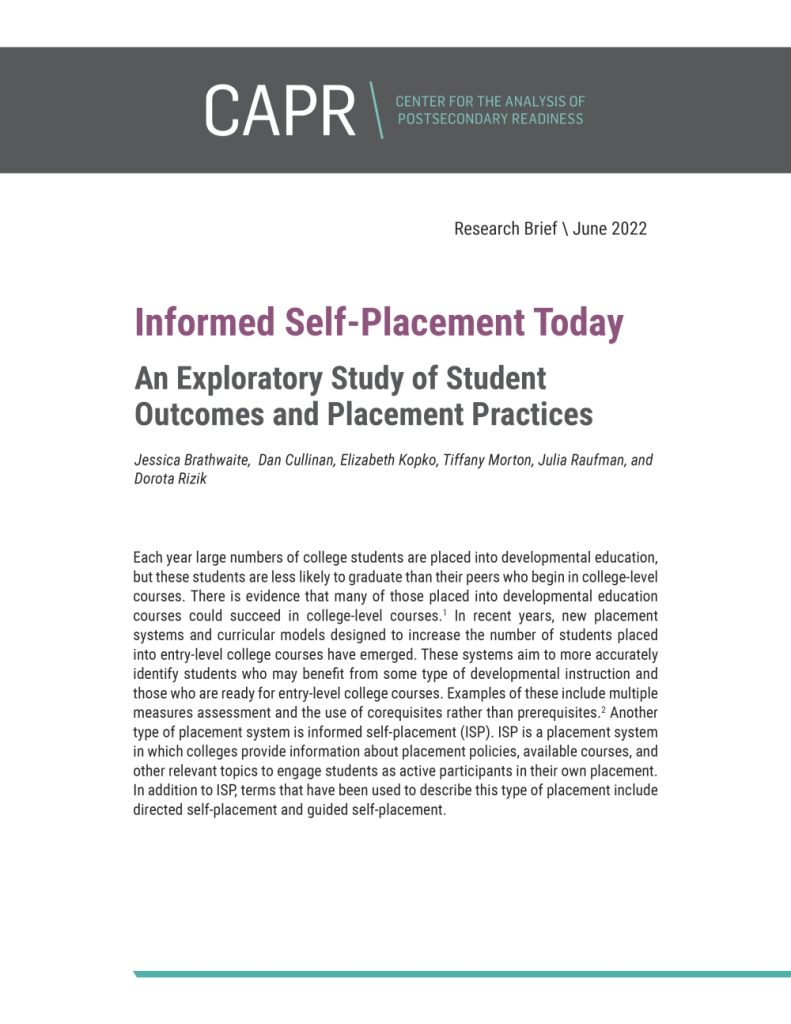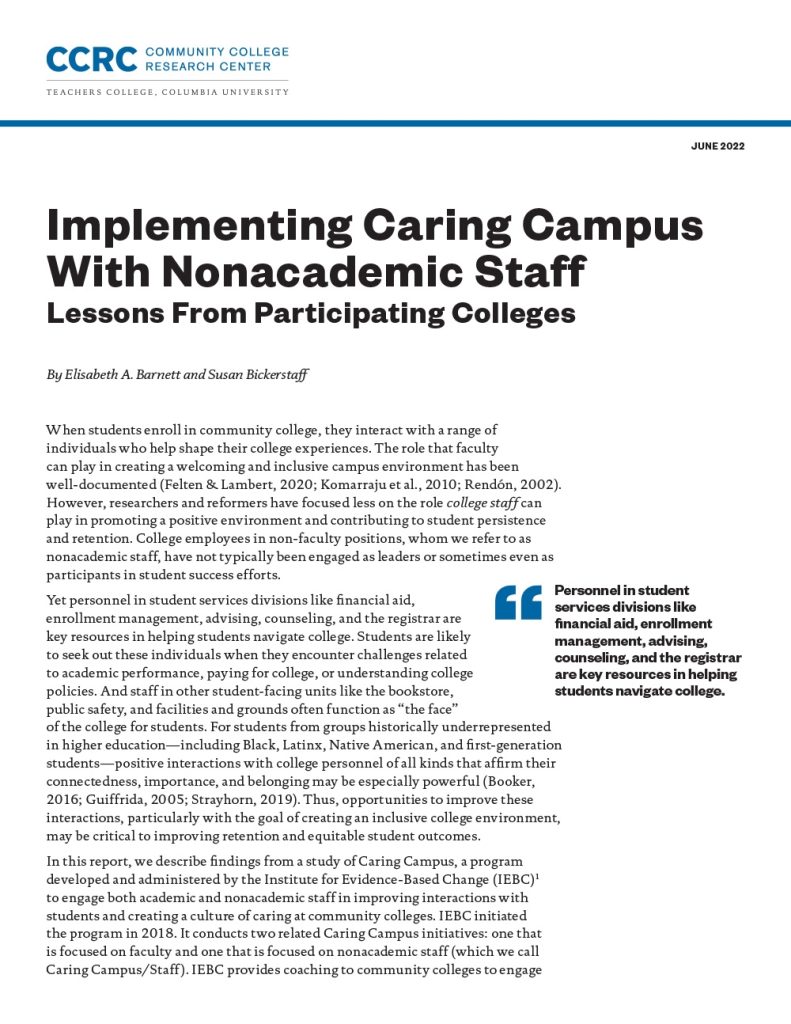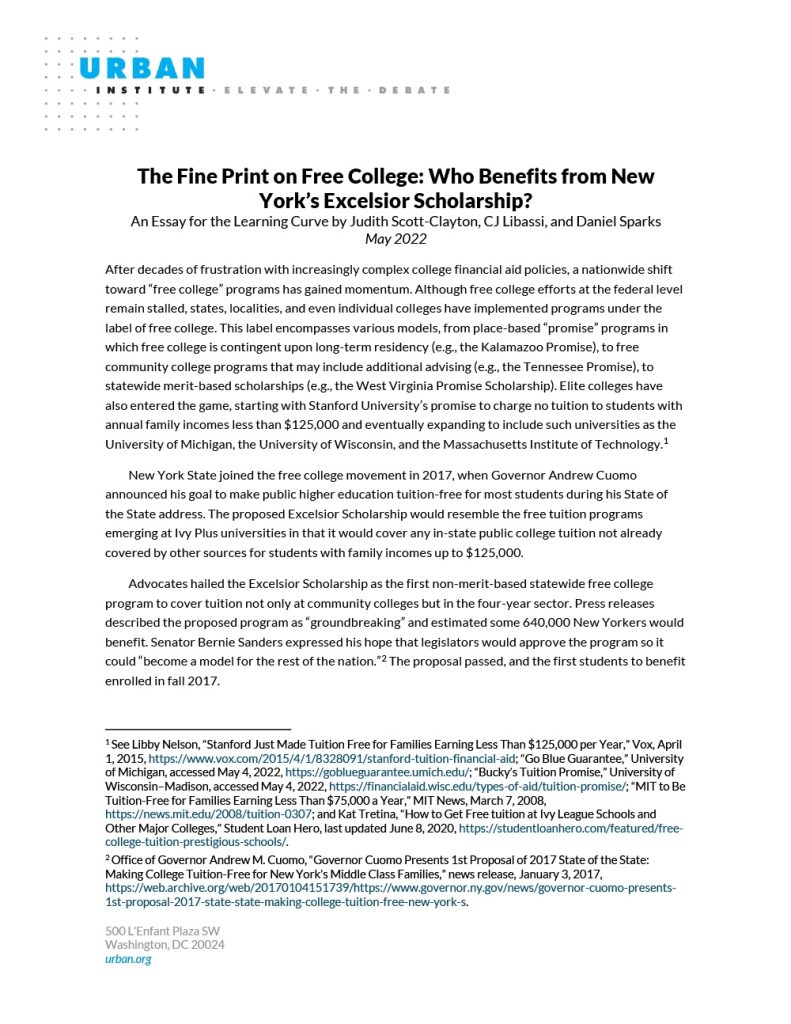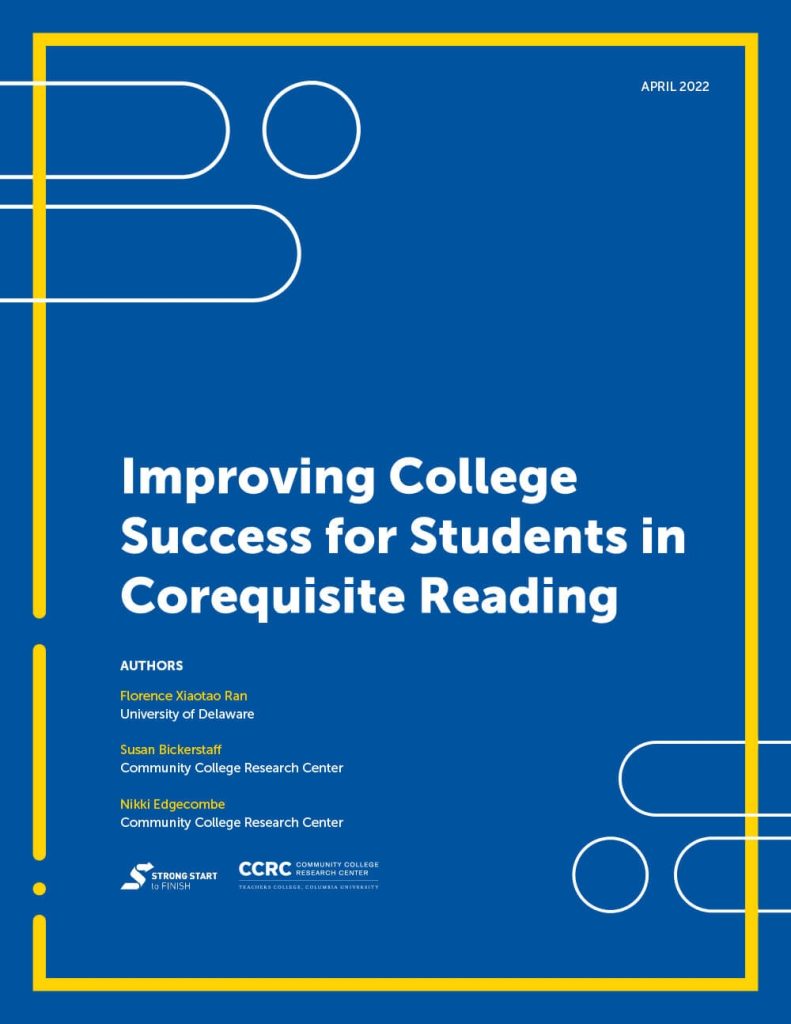Informed Self-Placement Today: An Exploratory Study of Student Outcomes and Placement Practices

This CAPR brief provides a taxonomy of various informed self-placement (ISP) systems, shares descriptive data from three colleges using ISP, and identifies important equity and access considerations for implementation.
Implementing Caring Campus With Nonacademic Staff: Lessons From Participating Colleges

Based on fieldwork at six institutions, this report describes how colleges are implementing Caring Campus/Staff, a program designed to engage nonacademic staff in improving interactions with students and fostering a culture of caring at community colleges.
The Fine Print on Free College: Who Benefits From New York’s Excelsior Scholarship?

Using data on students enrolled in two- and four-year colleges of the City University of New York, this essay assesses the distribution of benefits of the scholarship program in terms of who qualifies for, receives, and renews awards.
Improving College Success for Students in Corequisite Reading

Using administrative data, this report examines early college outcomes of students placed into corequisite reading courses at the 13 community colleges in the Tennessee Board of Regents system.
Preparing for Tomorrow’s Middle-Skill Jobs: How Community Colleges Are Responding to Technology Innovation in the Workplace

Based on fieldwork at eight institutions, this report describes how community colleges are responding to workplace technology innovation by adapting their workforce programming, diversifying pathways to certificates and degrees, and addressing equity concerns.
